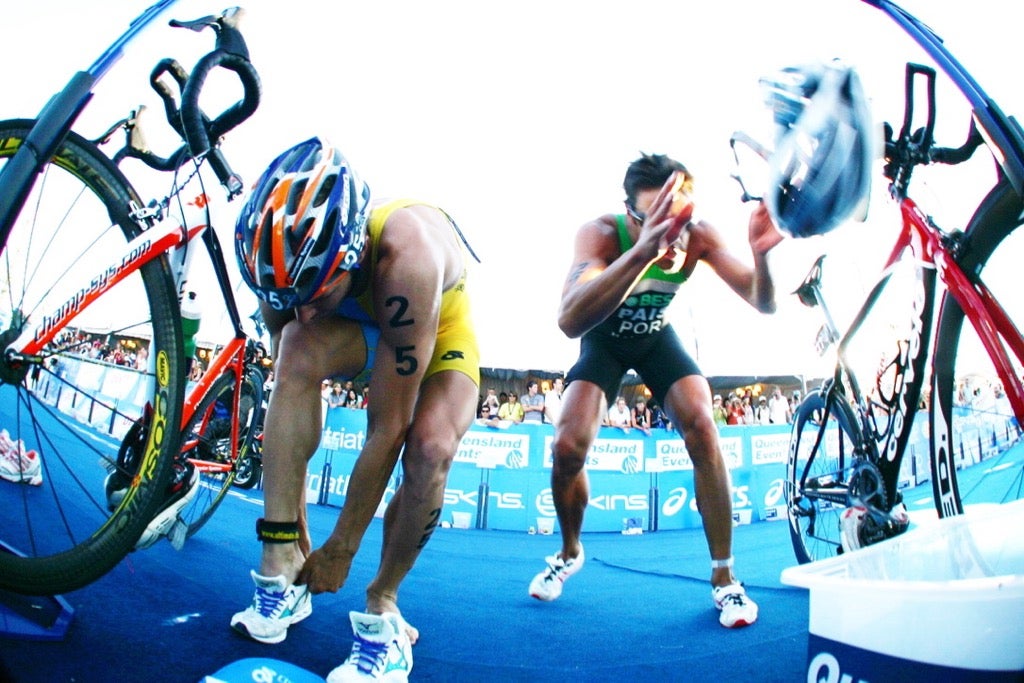The Importance of Doing a Dry Run of Your Race Day

Photo: Triathlon.org
A race-day dry run can lock in your training and lock out nerves. Enjoy the no-pressure prep, and get ready to crush.
Four-time Ironman world champion Chrissie Wellington has said that this sport isn’t just swim, bike, run: It’s triathlon. And the name of the game is all about how you string the three together.
Even if you’ve already figured out a lot in your training (oops, those sweet shorts are a total chafe-fest; mmm, a baked potato sits really well in your stomach before a swim), you still need to practice your race from start to finish, using exactly what you’ll have on race day. Practice everything at full speed. Really, everything. Everyone knows how to put on a pair of socks, but not when your feet are wet and a little sticky, and your fine motor skills are a little off because your nerves are full-on. How to nail your dry run:
Do It About A Month Before Your First Tri
That gives you time to change up anything that’s not working, says Elizabeth Waterstraat, founder of Multisport Mastery coaching.
Go for Skills, Not Distance
“You don’t have to bike or run far; this is about skill acquisition, not fitness,” says Abby Ruby Crew, founder of BalancedPowerCoaching. “I often have athletes do three or four transitions in a row.” Make mistakes. Everyone’s got to know what it’s like to go out on the run with your helmet on, so you don’t end up doing it in the race (even though someone always does).
Test Your Nerves
One thing you can’t approximate on your own is how you’ll feel with 1,500 of your new best friends standing on shore, waiting to start. Waterstraat recommends doing a 5K run, open-water swim, or other mass-start single-sport event to rehearse how you’ll manage pre-race crowds and jitters.
Get Messy
Crew will muck around with her athletes’ transitions while they’re in the swim during the dry run—placing a helmet here, a shoe over there. The idea is her athletes will have practiced race-day conditions enough that transitions become automatic, so her athletes need to learn to execute beautifully when things don’t go as planned. In other words, if you can’t change your transition area, make sure you’re ready to change your expectations: If you expect things to go wrong and they do, then everything’s still cool.